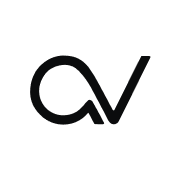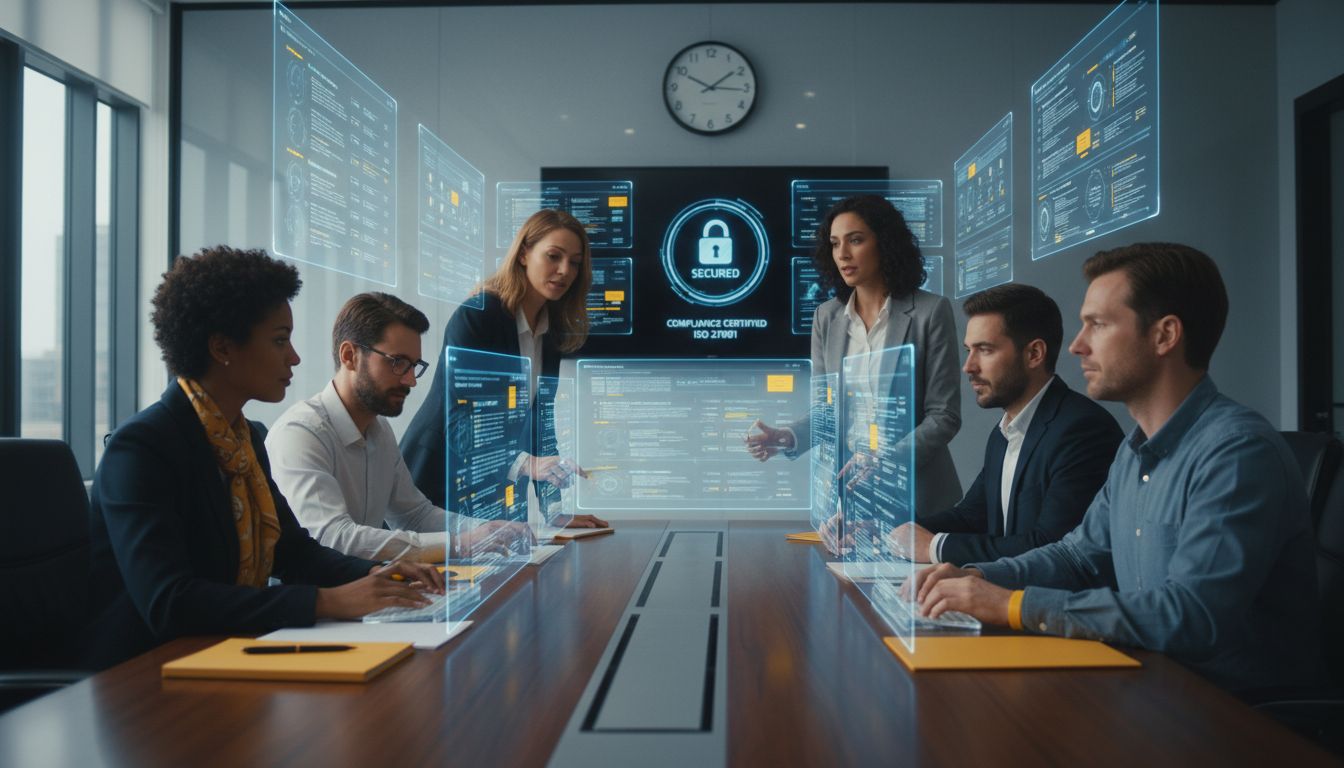What Is AI+Human Translation? Complete Overview
- AD VERBUM

- Nov 24
- 6 min read

Most advice about translation technology ignores a crucial fact: even the smartest software alone cannot deliver the accuracy demanded by regulated american industries. As global businesses face growing pressure to communicate clearly across languages, a simple machine-only approach falls short. By blending artificial intelligence with careful human oversight, AI+Human Translation brings together speed, precision, and cultural sensitivity in a way pure automation never could. Discover how this method reshapes expectations for translation quality and reliability.
Table of Contents
Key Takeaways
Point | Details |
Impact of AI+Human Translation | This approach optimizes translation accuracy and efficiency by merging AI technology with human expertise. |
Workflow Stages | The translation process involves asset preparation, AI processing, human review, and final quality assurance, ensuring contextual and cultural relevance. |
Security and Compliance | Organizations must prioritize data privacy and regulatory adherence in translation to protect sensitive information. |
Industry-Specific Benefits | AI+Human Translation is crucial for regulated sectors, offering precision and compliance in technical documentation. |
Defining AI+Human Translation and Key Concepts
AI+Human Translation represents an advanced linguistic approach that strategically combines artificial intelligence capabilities with human expertise to deliver precise, nuanced, and contextually accurate translations. According to research from sciencepg, this collaborative model leverages AI’s processing power while maintaining critical human oversight.
At its core, AI+Human Translation operates through a sophisticated workflow where machine learning technologies handle initial text processing and translation, followed by meticulous human review. As the research indicates, this approach enables handling large text volumes efficiently while ensuring cultural sensitivity and linguistic accuracy. The human experts function as crucial validators, refining machine-generated translations and addressing subtle contextual nuances that pure algorithmic systems might miss.

Key characteristics of this translation methodology include:
Rapid processing of extensive documentation
Enhanced accuracy through dual-layer verification
Preservation of contextual and cultural meaning
Consistent terminology management
Significant reduction in translation turnaround times
By integrating advanced AI capabilities with specialized human expertise, AI+Human Translation offers organizations a robust solution that transcends traditional translation limitations. For a deeper understanding of specialized translation workflows, explore our Complete Guide to Specialized Translation Workflows.
How AI+Human Translation Workflow Operates
The AI+Human Translation workflow is a meticulously designed process that transforms traditional translation methodologies through strategic technological integration. By understanding each stage of this advanced workflow, organizations can leverage sophisticated linguistic solutions that deliver unprecedented accuracy and efficiency.
Typically, the workflow unfolds through four critical stages:
Asset Preparation and Integration
Collecting existing translation memories
Preprocessing terminology databases
Establishing domain-specific linguistic guidelines
AI Initial Processing
Automated text segmentation
Machine translation generation
Initial contextual analysis
Expert Human Review
Detailed linguistic verification
Cultural and contextual refinement
Technical accuracy validation
Quality Assurance and Finalization
Comprehensive error checking
Compliance verification
Final linguistic polishing
Each stage represents a carefully orchestrated interaction between artificial intelligence and human linguistic expertise. The process ensures that translations are not merely mechanically accurate but contextually nuanced and culturally appropriate. For deeper insights into specialized translation approaches, explore our Why AI+Human Translation: Complete Industry Guide, which provides comprehensive industry perspectives on this transformative methodology.
Types of Translation Technologies Compared
Translation technologies have evolved dramatically, presenting organizations with multiple approaches to linguistic conversion. According to research from allstudyjournal, the integration of artificial intelligence in computer-assisted translation (CAT) software has significantly enhanced translation efficiency and reduced operational costs.
Translation Technology Landscape:
Machine Translation (MT/NMT)
Basic algorithmic translation
No human intervention
Lowest accuracy
Suitable for quick, non-critical content
AI translation (LLM-based)
Advanced AI-powered translation
Context-aware algorithms
Improved linguistic nuance
Still lacks human refinement
Computer-Assisted Translation (CAT)
Human translators use specialized software
Translation memory integration
Terminology management tools
Partial automation
AI+Human Translation
Comprehensive human and AI collaboration
Highest accuracy and contextual understanding
Multilayered quality verification
Optimal for complex, sensitive documents
Each technology offers distinct advantages, but the AI+Human Translation approach stands out by combining technological efficiency with human expertise.
For a comprehensive understanding of how translation impacts business success, explore our guide on The Importance of Translation and Localization for Modern Business Success.
Security, Compliance, and Data Sovereignty Requirements
In the complex landscape of translation technologies, security and compliance are paramount concerns for organizations handling sensitive information. According to research from uoc, the translation industry faces critical challenges in assessing AI tools to ensure they meet rigorous quality standards and industry regulations.
Key Compliance Considerations:
Data Privacy Protection
Regulatory Framework Adherence
Secure Information Handling
Confidentiality Preservation
The emerging AI+Human Translation approach addresses these critical requirements through multilayered security protocols. Complementing this approach, Research highlights innovative frameworks like LLM-BT that automate terminology verification while maintaining stringent data consistency standards.
Compliance Dimensions:
Regulatory Compliance
GDPR alignment
HIPAA medical data protection
Industry-specific regulatory standards
Comprehensive audit trails
Data Sovereignty
Localized data storage
Restricted international data transfers
Controlled access management
Encryption of sensitive documents
Technological Security
Private cloud infrastructure
Restricted AI model access
Continuous security monitoring
Proprietary translation environments
Translation technologies must evolve beyond mere linguistic conversion to become robust, secure communication solutions. For organizations navigating complex global communication landscapes, understanding these security dimensions is crucial. Learn more about strategic translation approaches in our The Importance of Translation and Localization for Modern Business Success.
Advantages for Regulated and Technical Industries
AI+Human Translation offers transformative solutions for industries where precision is not just important—it’s mandatory. According to Research, a groundbreaking co-learning framework demonstrates how human-AI collaboration can dramatically enhance productivity and creativity in complex problem-solving tasks, which is particularly critical for technical and regulated sectors.
Industry-Specific Translation Challenges:
Extreme terminology accuracy
Complex technical documentation
Regulatory compliance requirements
Zero-tolerance for mistranslation
Advanced translation technologies are revolutionizing how specialized industries manage multilingual communication. Complementing this approach, Research highlights interactive neural machine translation techniques that reduce human effort through reinforcement learning, specifically benefiting regulated industries by improving translation accuracy and efficiency.
Key Advantages for Technical Sectors:
Pharmaceutical & Medical
Precise clinical trial documentation
Regulatory submission translations
Medical device instruction accuracy
Patient safety communication
Legal & Compliance
Contract and agreement translations
Precise legal terminology preservation
Regulatory document localization
International compliance documentation
Engineering & Manufacturing
Technical manual translations
Specification document accuracy
Safety instruction localization
Complex technical terminology management
By integrating advanced AI capabilities with expert human oversight, AI+Human Translation delivers unparalleled precision for industries where a single mistranslation can have significant consequences. For comprehensive insights into strategic global communication, explore our The Importance of Translation and Localization for Modern Business Success.
Elevate Your Translation Accuracy with AD VERBUM’s AI+HUMAN Workflow
The article highlights the critical challenge companies face when relying solely on traditional machine translation or public neural machine translation tools. These methods often create risks such as terminology errors, data leakage, and lack of context awareness. In regulated and technical industries, these pitfalls translate into costly compliance failures and reputational damage. Key concepts like terminology enforcement, human expert oversight, and data sovereignty underline the necessity of a secure and precise approach to translation.
AD VERBUM directly addresses these challenges through its proprietary LLM-based AI+HUMAN translation solution. With over 25 years of experience serving Life Sciences, Legal, Finance, and Manufacturing sectors, AD VERBUM ensures zero data leakage by operating exclusively on European servers with ISO 27001 certification. Our expert linguists integrate your specialized terminology and style guides, enabling translations that are not only faster but guaranteed to meet strict regulatory standards.
Discover how you can safeguard your sensitive documents while accelerating turnaround times by exploring The Importance of Translation and Localization for Modern Business Success and learn more about our comprehensive process with Why AI+Human Translation: Complete Industry Guide. Ready to experience the highest level of precision and security in translation services tailored for your industry Visit AD VERBUM today and take the first step toward flawless global communication.
Frequently Asked Questions
What is AI+Human Translation?
AI+Human Translation is a collaborative approach that combines the efficiency of artificial intelligence with human expertise to produce accurate and contextually nuanced translations.
How does the AI+Human Translation workflow operate?
The workflow typically consists of four stages: Asset Preparation and Integration, AI Initial Processing, Expert Human Review, and Quality Assurance and Finalization, ensuring both accuracy and cultural sensitivity.
What are the advantages of using AI+Human Translation over other translation methods?
AI+Human Translation offers enhanced accuracy, rapid processing, dual-layer verification, and better preservation of contextual meaning compared to standard machine translation or computer-assisted translation.
What industries benefit the most from AI+Human Translation?
Industries such as pharmaceuticals, legal, and engineering require high precision in their translations. AI+Human Translation provides the necessary accuracy and compliance for critical documentation in these regulated sectors.
Recommended



